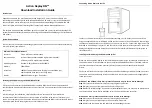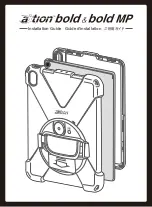
OPERATION LPA
Step 1.
Before using any RENFROE clamp, refer to the Application Section to
confirm that the operation to be undertaken is an appropriate applica-
tion for this product.
Step 2.
Select appropriate capacity and plate thickness. The model designa-
tion, capacity and plate thickness are stenciled on each clamp.
WARNING: Never exceed rated capacity or use on plates that are
not within the range of plate thickness stenciled on the clamp.
Lift only one plate on each lift.
Always use a clamp with maximum plate thickness and rated capacity
near equal to the thickness and weight of the plate being lifted.
Step 3.
Inspect clamp before each lift.
WARNING: Do not use if in need of repair.
A. Check the clamp to be certain the identification and warn-
ing tags are present and legible.
B. Do not use the clamp if the tags are missing or illegible.
C. Inspect gripping surfaces for wear and defects. Gripping surfaces
must be sharp and free of foreign matter.
D. Inspect condition of body for wear, damage and distortion, particu-
larly in the area of the jaw opening.
E. Inspect lifting shackle and all pins for wear and damage.
F. Lock spring must have definite amount of tension when the lock is
moved to the “Lock Closed” position without material in the clamp.
Lock Pawl must rest on body spacer sleeve.
G. On the model LPA the auxiliary lock button must have a positive
spring action that projects it out to engage the lock handle when
the handle is moved to the “Lock Closed” position.
H. Remove from service any clamp in need of repair.










































